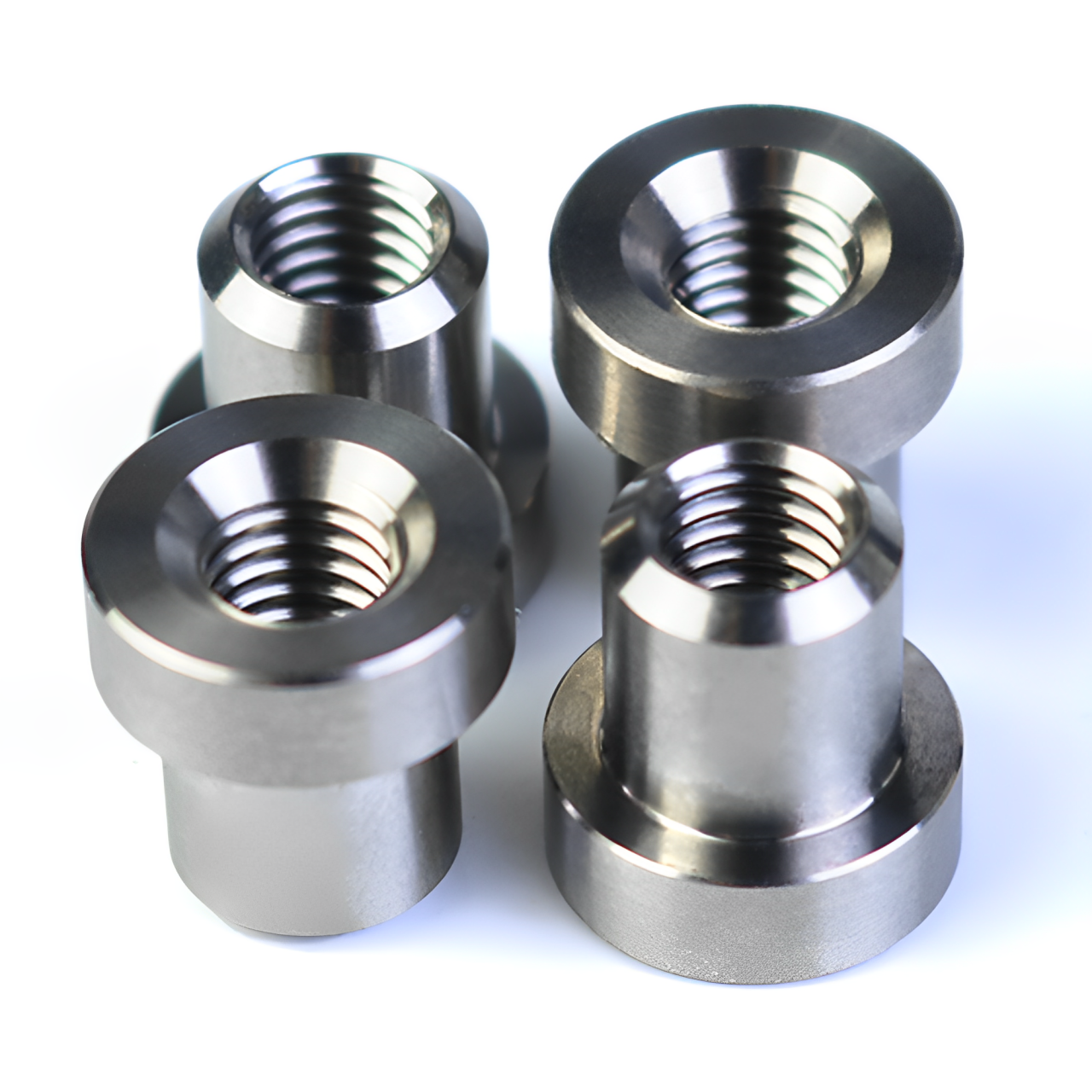Titanium and CNC Technology: Paving the Way for the Next Generation of Automotive
Nov.27.2024

Growing Trends in Automotive Manufacturing
Briefly mention how technological advances and consumer demands for lighter, stronger, and more durable vehicles are driving the increased use of titanium parts.
The Role of Titanium CNC Parts in the Automotive Industry
1.Lightweight and Durability for Performance Parts
- ·Performance Enhancements: Discuss how titanium is used in components that require high strength-to-weight ratios, such as engine parts, suspension systems, exhaust systems, and braking components.
- ·Fuel Efficiency: Explain how titanium’s lightweight properties contribute to fuel efficiency, as reducing weight is crucial in meeting the automotive industry’s stringent fuel economy regulations.
2.Corrosion Resistance and Longevity
- ·Long-Lasting Components: Highlight titanium’s corrosion resistance and how it extends the lifespan of parts exposed to harsh conditions, such as engine components or brake systems.
- ·Weather and Heat Resistance: Discuss the benefits of titanium’s ability to withstand extreme temperatures and weather conditions, making it ideal for critical parts like exhaust manifolds or engine blocks.
Technological Innovations in Titanium CNC Machining
1.Precision Machining for Complex Shapes
- ·Complex Geometries: Focus on the capabilities of CNC machining in producing highly complex and precise parts from titanium. Discuss how 5-axis CNC machines allow manufacturers to create intricate parts with minimal material waste.
- ·Surface Finishing: Discuss advanced surface finishing techniques, such as electropolishing or anodizing, that enhance titanium’s properties and aesthetics for automotive applications.
2.3D Printing and Hybrid Manufacturing
- ·Titanium 3D Printing: Explore how additive manufacturing (3D printing) is being used in conjunction with CNC machining to produce titanium parts with complex internal structures or geometries. This combination allows for reduced weight and optimized performance while maintaining precision.
- ·Hybrid Manufacturing: Mention hybrid manufacturing technologies that combine CNC machining and additive manufacturing to produce titanium parts with superior strength, durability, and design flexibility.
Future Trends in Titanium CNC Parts for the Automotive Industry
1.Focus on Electric and Autonomous Vehicles
- ·Electric Vehicles (EVs): Discuss the role of titanium CNC parts in the growing electric vehicle market. Titanium’s lightweight and durability are especially beneficial for EV batteries, electric motors, and lightweight structural components.
- ·Autonomous Vehicles: Mention how autonomous vehicles will demand highly precise and durable parts, especially for the sensors, actuators, and chassis that require precision and long-term reliability.
2.Sustainability and Recycling
- ·Sustainability Trends: Explore the trend toward sustainability in the automotive industry, including efforts to reduce the environmental impact of manufacturing. Highlight how titanium recycling is becoming an important aspect of sustainable automotive manufacturing, with research focused on improving the efficiency of titanium recycling processes.
- ·Recyclability of Titanium: Discuss the growing interest in closed-loop recycling of titanium in automotive manufacturing and its potential to reduce costs and environmental impact.
Challenges in Titanium CNC Parts Production for the Automotive Industry
1.High Cost of Titanium
- ·Material Costs: Discuss the high cost of titanium compared to other materials like steel or aluminum, and how this affects its use in automotive production.
- ·Cost-Efficient Manufacturing: Explore how advancements in CNC machining technology and manufacturing processes are helping reduce the overall cost of producing titanium parts for the automotive sector.
2.Machining Challenges
- ·Material Hardness: Titanium is a challenging material to machine due to its hardness and tendency to work-harden. Discuss how advanced CNC technologies, including diamond-coated tools and high-speed machining techniques, are being employed to overcome these challenges.
- ·Tool Wear and Longevity: Talk about the need for continuous research into improving the tooling used in titanium CNC machining to improve longevity and performance.
Applications of Titanium CNC Parts in the Automotive Industry
- ·High-Performance Sports Cars: Discuss how high-end sports car manufacturers are using titanium CNC parts in their exhaust systems, suspension components, and brake systems to enhance vehicle performance.
- ·Automotive Safety and Durability: Highlight the use of titanium in parts where safety and durability are critical, such as crash-resistant components and reinforced chassis.
The Future of Titanium in Automotive Manufacturing
- ·Continued Research: Emphasize the need for ongoing research to discover new alloys and manufacturing techniques that can make titanium more accessible to the automotive industry.
- ·Industry 4.0: Discuss how Industry 4.0 technologies like AI, machine learning, and smart manufacturing are improving the efficiency and quality of titanium CNC part production.
- ·Global Trends: Touch on global trends, such as emerging markets and regional regulations, that may impact the use of titanium in automotive manufacturing.


